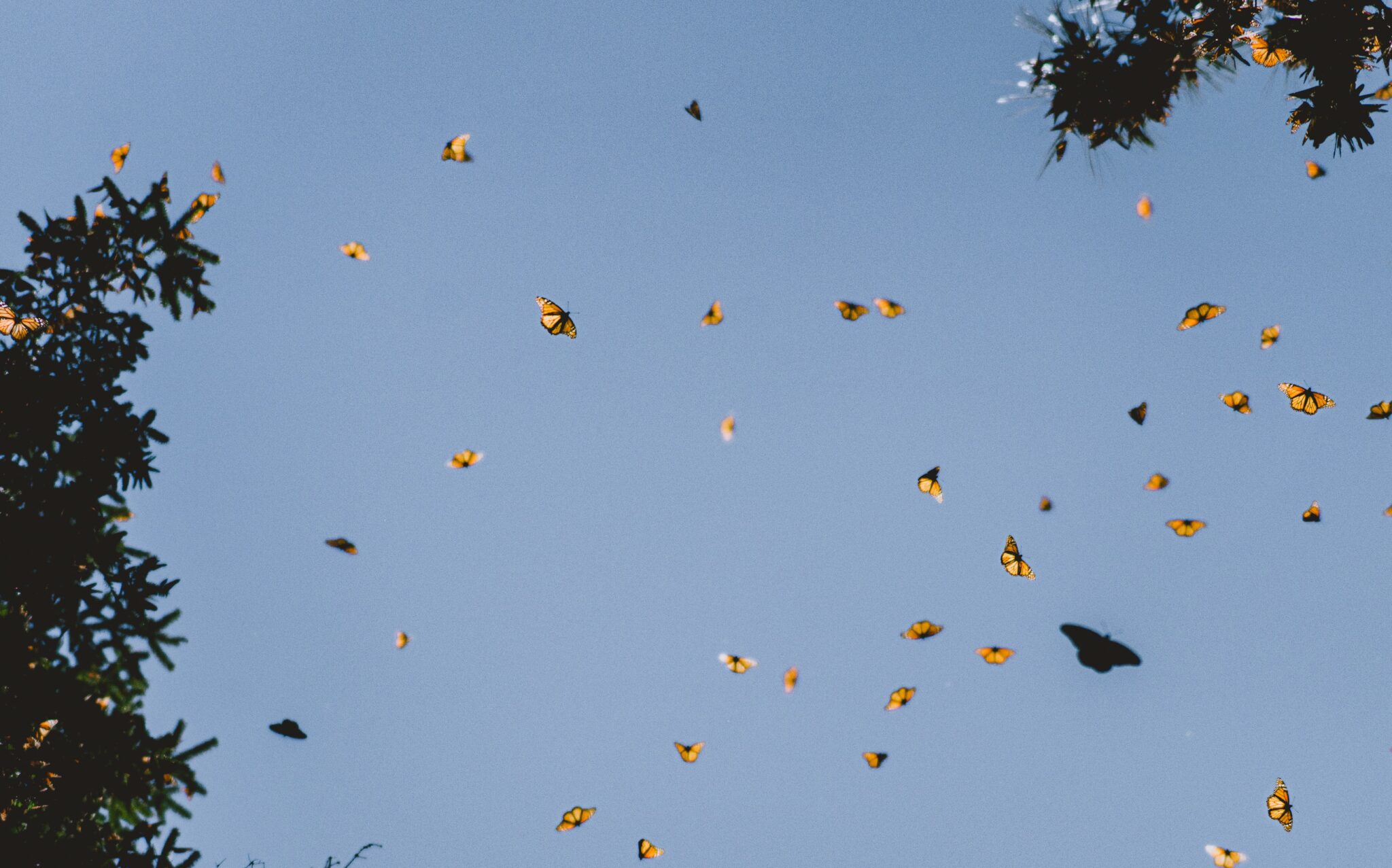When was the last time you took a minute to go out into your garden or balcony to observe nature? We are all so busy that we rarely take out time to enjoy the beauty of nature. Here is a beginner’s guide to identifying common butterflies in Delhi. All you need is a few minutes and some sunlight! You will find these beautiful creatures in your balcony plants, backyard, and the nearest park. I hope this encourages you to take a break from screen time and appreciate the natural beauty around you.
This week’s focus is common butterflies and moths. The life cycle of moths and butterflies is fairly similar. However moth larva makes cocoons instead of turning into a chrysalis. Listed below are some common caterpillars, moths and butterflies along with their descriptions.
The Common Mormon (Papilio polytes)
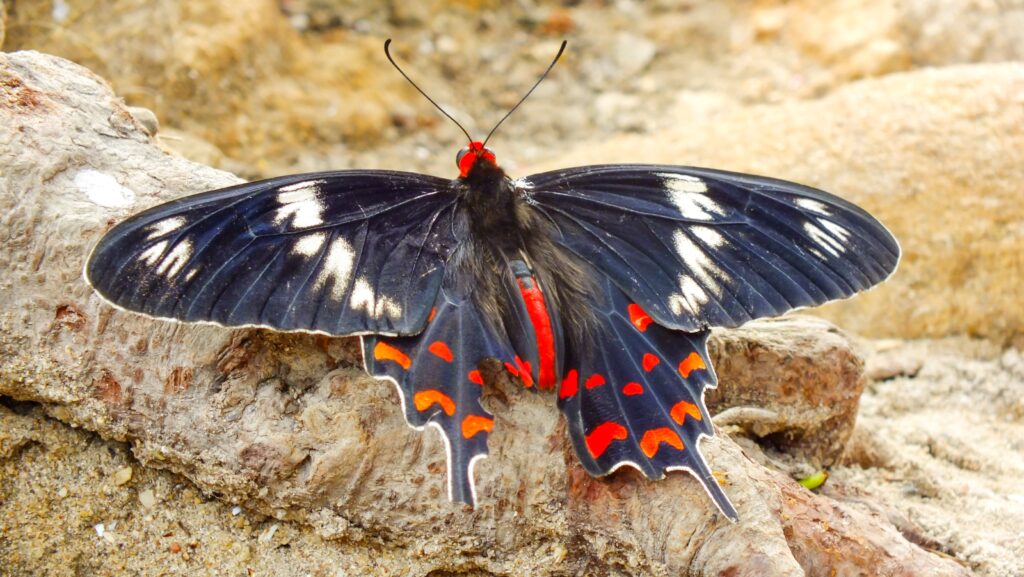
The Common Mormon caterpillars can be found in host plants like the Indian curry leaf and citrus plants. One can find it in Asia, in urban gardens and wooded areas. Their caterpillars are lime green in colour with black bands running across their bodies. The butterfly belongs to the Swallowtail family of butterflies. The black butterflies have a thick white band running across their bodies, some may even have spots of red. They are adaptable and can thrive in most places. From their birth as an egg, their average lifespan is 30-40 days.
The Common Jay (Graphium doson)
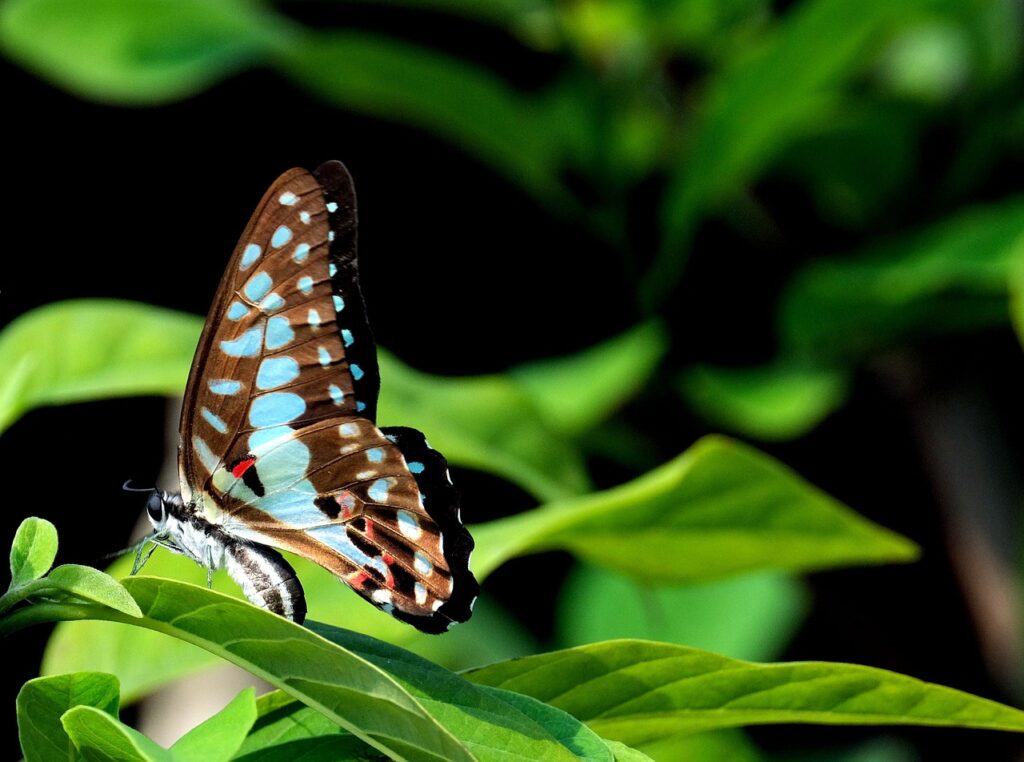
You can find it on Ashoka trees, where it lays its eggs. The caterpillars resemble bird excrement and also release chemicals that have an unpleasant smell to protect themselves from predators. The Common Jay belongs to the Swallowtail family of butterflies. The butterflies are bright blue, green and black with hind wings that look like tails. They have a wingspan of 7-8 centimetres when fully grown.
The Tiger Butterfly (Danaus genutia)
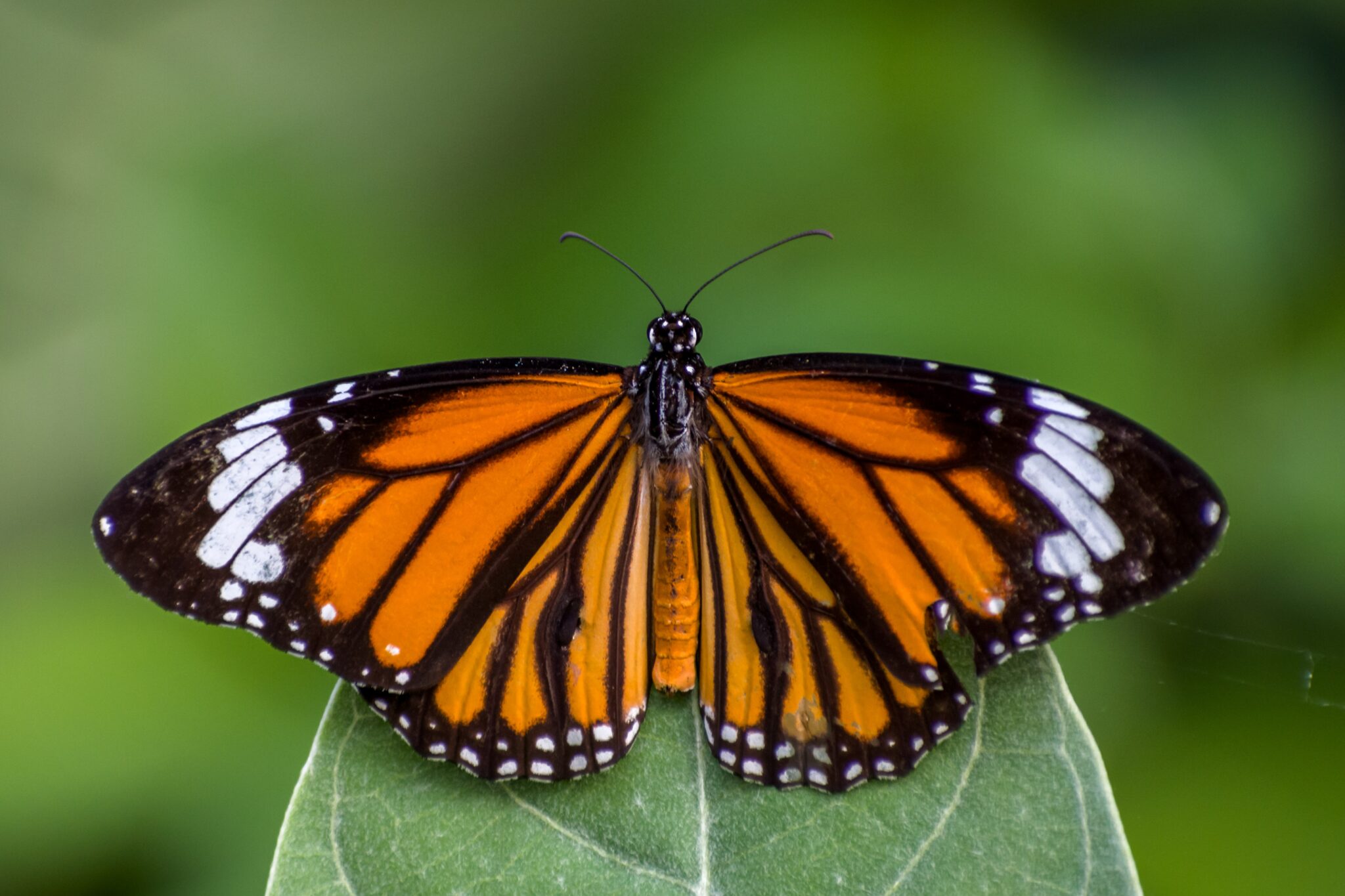
It is part of the brush-footed butterfly family, is extremely common in India. It has 16 subspecies. The caterpillars are around 3 cm in length and have a pale white colour with patches of black. However, they eventually develop streaks of purple and yellow. The wings of the butterfly have a tan colour with black bands and white spots. They have a large wingspan of 10 cm and are powerful fliers but they mostly fly near the ground.
Red Pierrot Butterfly (Talicada nyseus)
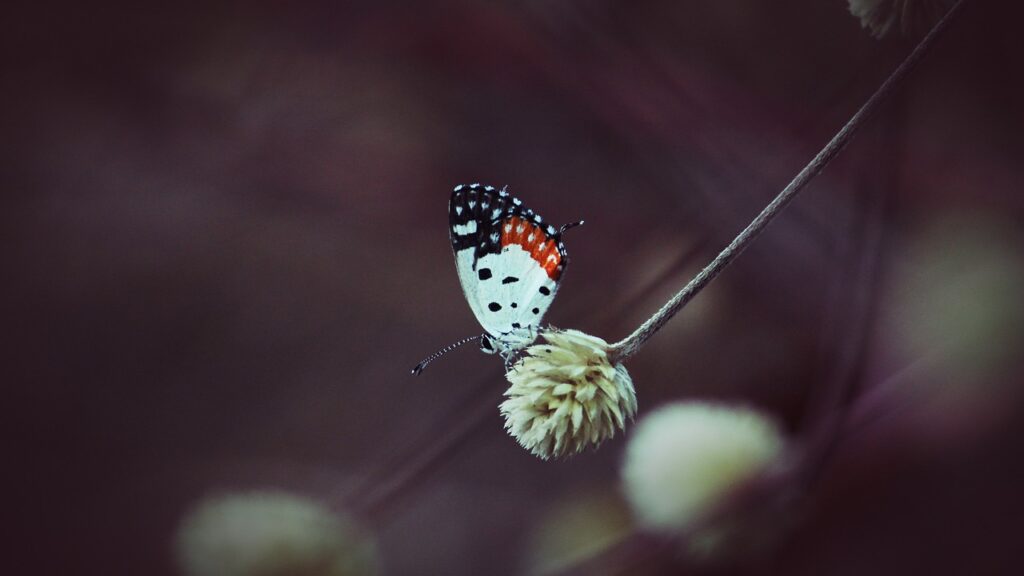
You can find it in jungles and cities as it can survive in many habitats. The caterpillar is pale yellow with a touch of black, its body is covered with small hair-like structures. It is unique as it spends its life between the layers of the leaf on which it hatched. The butterfly flutters close to the ground near plants like kalanchoe or periwinkle. It is small, only about 3 cm. and prefers flowers that have open petals. Their wings are a mix of orange, black and white with distinct markings.
Lime Butterfly (Papilio demoleus)
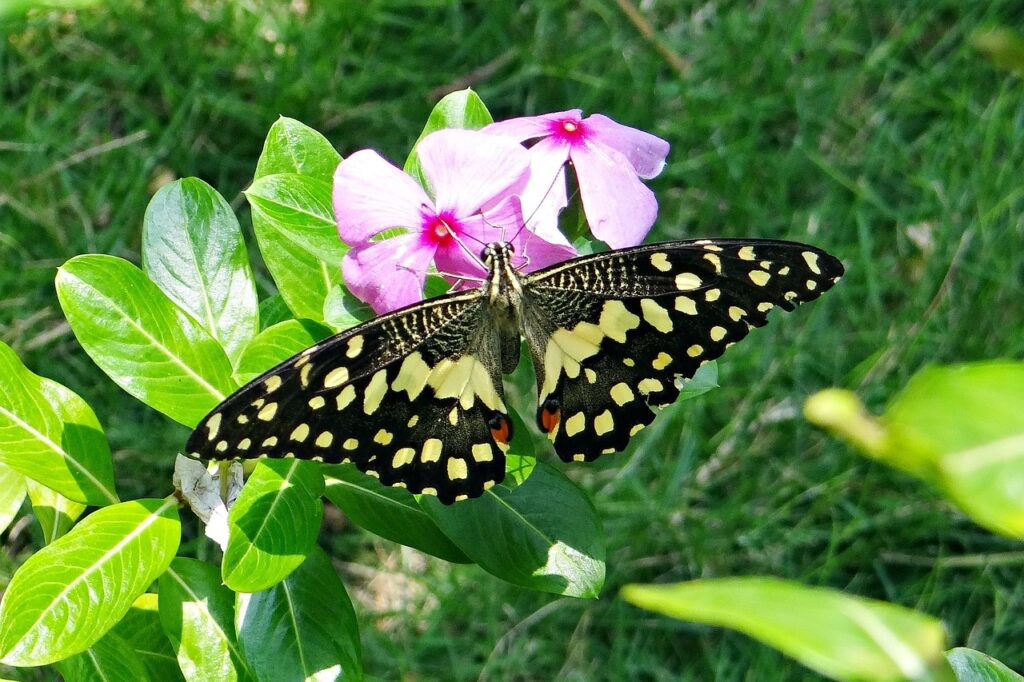
The Lime Butterfly is beautiful to look at. It is part of the swallowtail butterfly family and has an impressive wingspan of 8-10 cm. You can find it across South Asia. The caterpillar gets its name from its habit of eating lime curry leaves. The caterpillar looks green like a leaf and has a huge appetite. The lime butterfly is black with yellow spots all over its wings. You can see them mud-puddling and visiting flowers. They are tailless and known for their quick and various modes of flight.
Now it’s time to put your gadgets away and go to your backyard, balcony, or park and start searching for caterpillars and butterflies. Happy exploring!
Which is your favorite butterfly or butterflies?
Let us know in the comments below.
About the Author
Riya Mehtani is an aspiring psychologist, she adores animals and bugs and loves spending time in nature.

